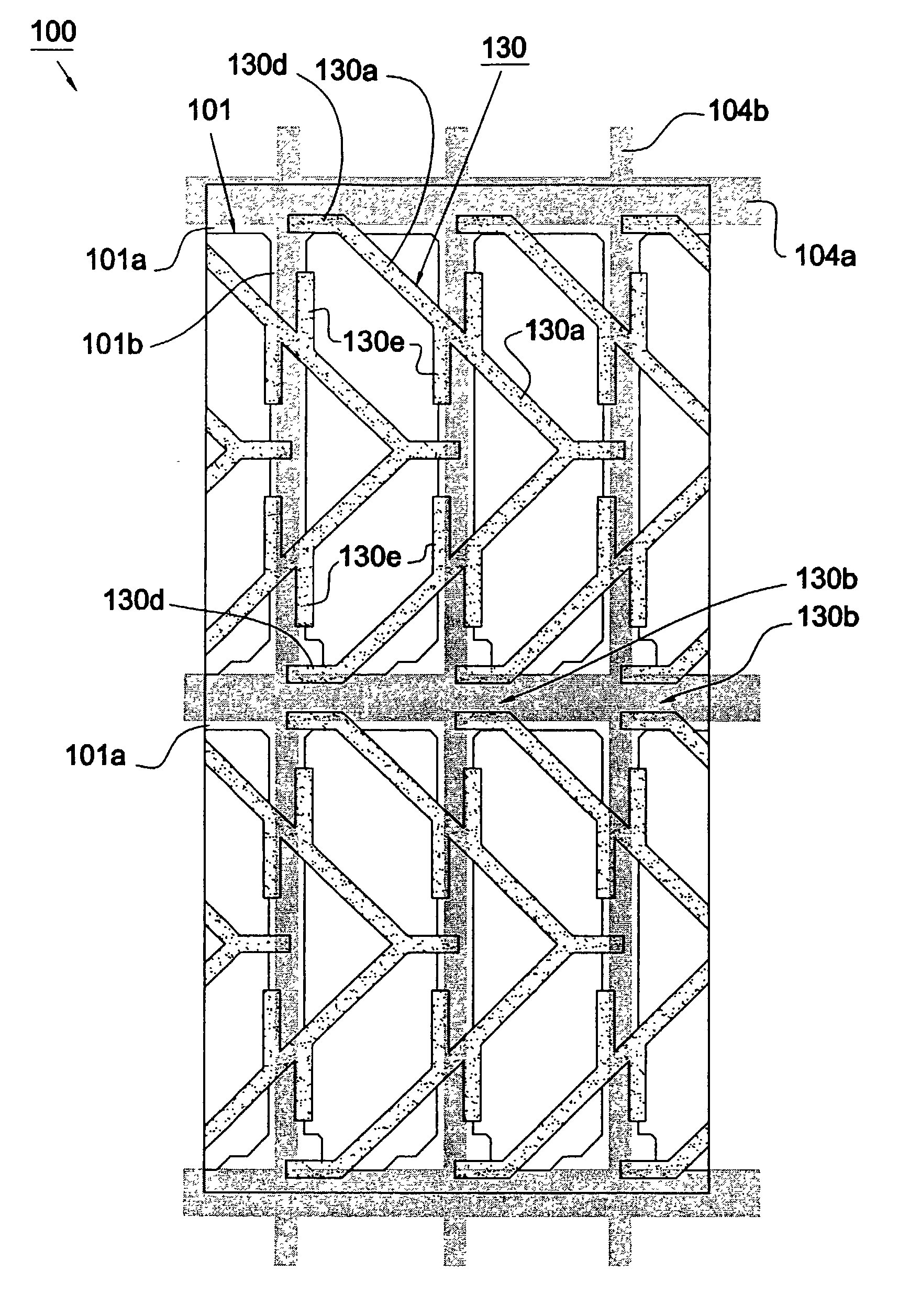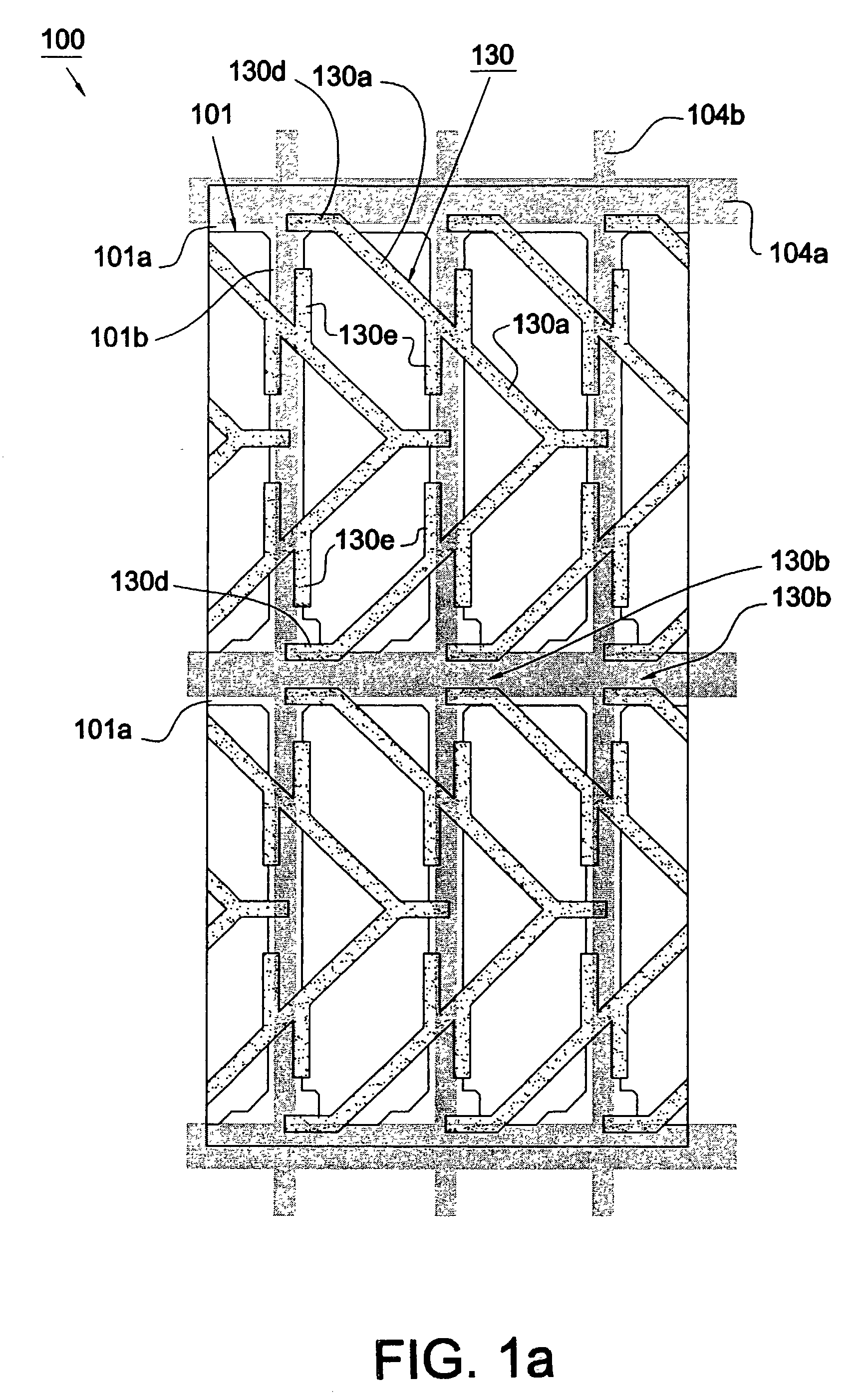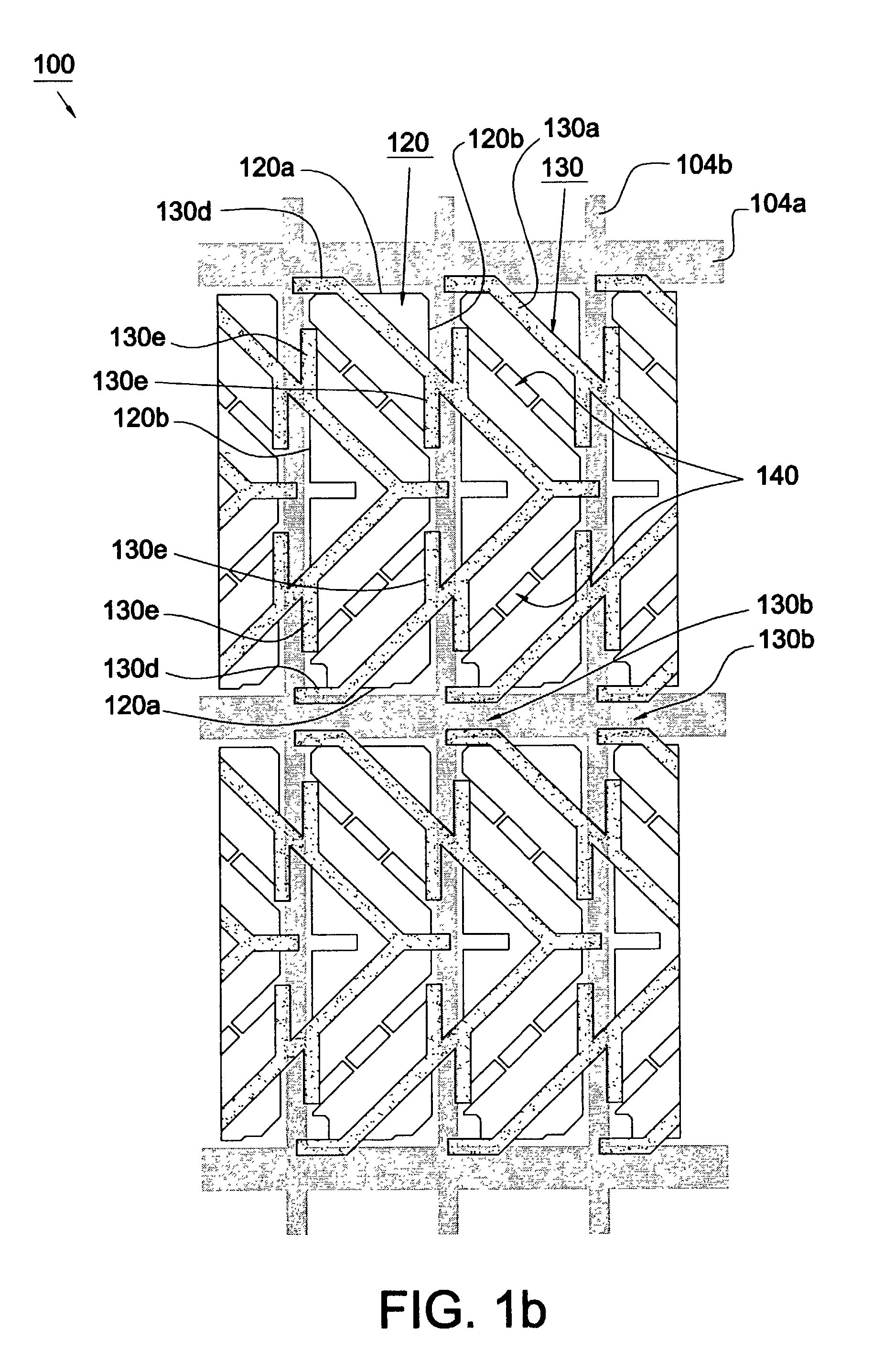Liquid crystal display including array of protrusions in a broken zigzag pattern all formed within area of light-shielding matrix
a technology of liquid crystal display and array of protrusions, applied in non-linear optics, instruments, optics, etc., can solve the problems of significant masking of the deteriorating display quality, disordered orientation of liquid crystal molecules, and dislocation around the edges of breaks
- Summary
- Abstract
- Description
- Claims
- Application Information
AI Technical Summary
Benefits of technology
Problems solved by technology
Method used
Image
Examples
first embodiment
[0024]FIGS. 1a and 1b show a portion of an MVA LCD 100 with discontinuous regulating means realized by providing specific protrusion and slit pattern according to the present invention. The first substrate 102 has a light-shielding matrix 101 (not shown in FIG. 1b), for example a black matrix, formed thereon. The second substrate 104 is provided with a plurality of parallel gate lines 104a, a plurality of parallel data lines 104b perpendicular to the gate lines 104a, and a plurality of thin film transistors (TFTs) and pixel electrodes 120 (not shown in FIG. 1a) formed like a matrix at the intersections between the gate lines 104a and data lines 104b. The pixel electrode 120 has first edges 120a parallel to the gate lines 104a and second edges 120b parallel to the data lines 104b. The LCD 100 is formed with a plurality of protrusions 130 and slits 140 (not shown in FIG. 1a) for regulating the orientation of the liquid crystal such that the alignment of liquid crystal molecules is ind...
second embodiment
[0028]FIG. 2 shows the pixel region of an MVA LCD 200 according to the present invention wherein the pixel electrodes 120 and the slits 140 are not shown. This LCD 200 includes a plurality of protrusions 132 formed inside one channel defined by two first branches 130d extending from the main bodies 130a of adjacent protrusions 130 and the substrates 102, 104 (not shown). During the step of pressing the substrates in the ODF process, the protrusions 132 slow down the flow rate of the dropped liquid crystal material through the aformentioned channel defined by the first branches 130d.
third embodiment
[0029]FIG. 3 shows the pixel region of an MVA LCD 300 according to the present invention wherein the pixel electrodes 120 and the slits 140 are not shown. This LCD 300 includes a plurality of protrusions 134 formed at a location close to the left opening of the aformentioned channel. During the step of pressing the substrates in the ODF process, the protrusions 134 slow down the flow rate of the dropped liquid crystal material through the aformentioned channel.
PUM
 Login to View More
Login to View More Abstract
Description
Claims
Application Information
 Login to View More
Login to View More - R&D
- Intellectual Property
- Life Sciences
- Materials
- Tech Scout
- Unparalleled Data Quality
- Higher Quality Content
- 60% Fewer Hallucinations
Browse by: Latest US Patents, China's latest patents, Technical Efficacy Thesaurus, Application Domain, Technology Topic, Popular Technical Reports.
© 2025 PatSnap. All rights reserved.Legal|Privacy policy|Modern Slavery Act Transparency Statement|Sitemap|About US| Contact US: help@patsnap.com



